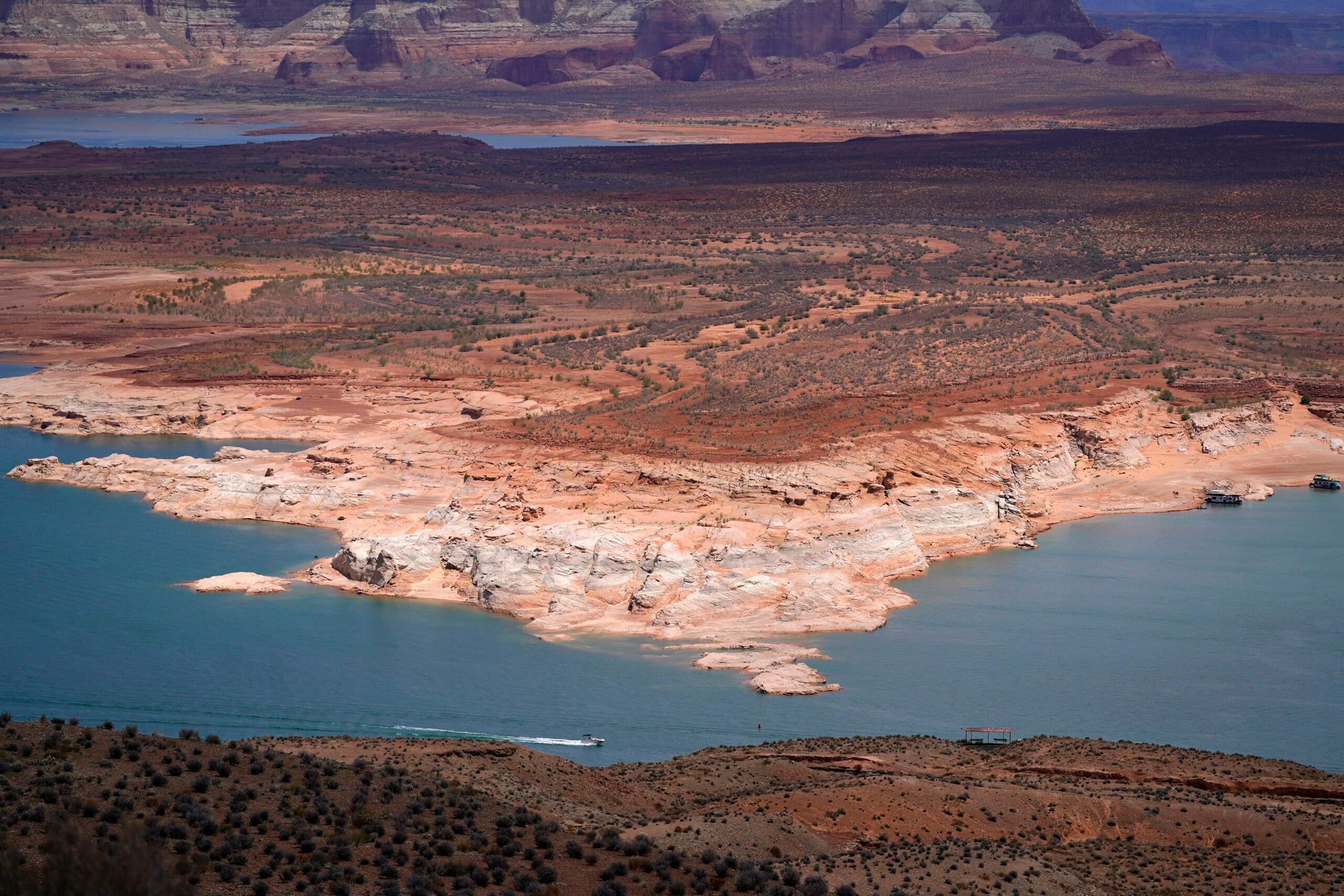
Spring snowmelt likely won’t deliver the big water supply bump the drought-stricken Colorado River and its reservoirs need, data from the latest federal river forecast shows.
The May to July season is a crucial time for the river, which is replenished by snowmelt running off the mountains on the Western Slope, and the system is in need of a major moisture boost amid a 20-year drought fueled by climate change.
Lake Powell is expected to get only 59 percent of the amount of water that usually flows into the reservoir between May and July, according to the National Weather Service’s Colorado Basin River Forecast Center. That’s not great for the vital reservoir and hydropower source, which is sitting at its lowest level on record.
The amount of water forecasted to flow into Lake Powell is a good marker for the overall health of the upper half of the Colorado River system. The reservoir on the Utah-Arizona border, the nation’s second-largest, supplies water and electricity to millions of people in the West.
The federal forecast zooms in on Colorado and the major river basins that feed the Colorado River and predicts below-normal runoff in each of them. In the White and Yampa River basin in the northwest, the range of runoff is expected to be between 65 and 95 percent of normal. South of that, in the Upper Colorado Headwaters basin, runoff is expected to be between 55 and 95 percent of normal.
The runoff forecast is worse in the south, where hydrologist Cody Moser said warmer-than-average temperatures have caused the snowpack to melt sooner and quicker. In the Gunnison River basin, runoff is expected to be between 50 and 95 percent average. South of that, runoff in the Dolores River basin is expected to be between 45 and 60 percent of normal, and in the San Juan Basin, 55 to 70 percent of normal is forecasted.
Moser said that parts of the upper Colorado River basin have gotten near-normal amounts of precipitation since fall of 2021. But because the soil is drier with warmer temperatures, it soaks up a lot of the snowmelt before it reaches rivers and reservoirs.
The U.S Bureau of Reclamation recently announced emergency plans to protect Lake Powell by holding back water releases to downstream states. This is the first time the agency has moved to delay a release of water from Lake Powell that normally goes to Arizona, California and Nevada.
Instead, the federal agency plans to keep more than 480,000 acre-feet of water in the reservoir to prop up supplies to protect hydropower production.
More about the Colorado River
- The most endangered river: A conservation group considers the Colorado River the epicenter of the nation’s water and climate crisis.
- Lake Powell dangerously low: As the reservoir dries up, there’s growing concern about the future of hydropower production.
- What happens if the river keeps drying up: It could trigger a chain-reaction of legal wrangling that could lead to some water users being cut off from the river.
- Tribes fight for inclusion: Leaders of native tribes who depend on the river say a century-old agreement is fueling water inequalities.
- Where’s the water going?: Much of it gets absorbed by soil baked dry by hotter temperatures due to climate change.









